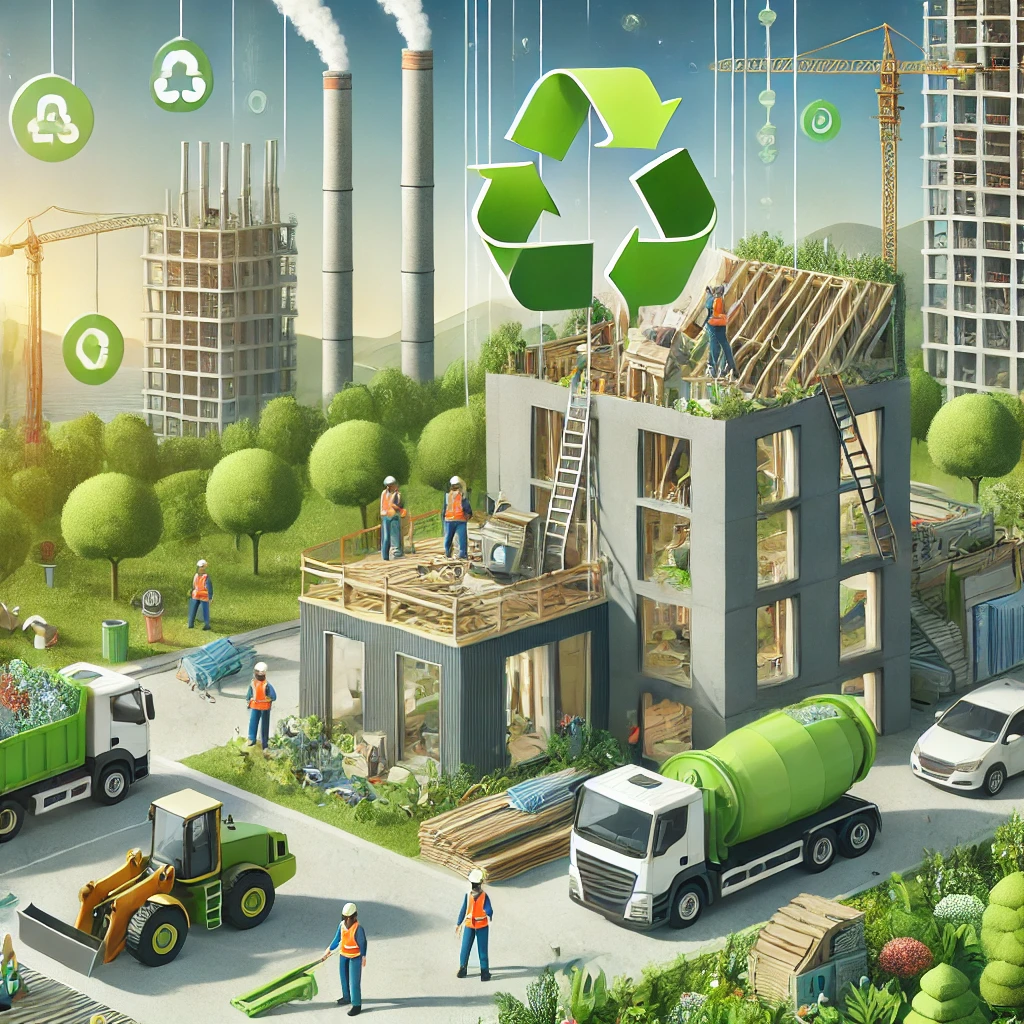As the world faces escalating environmental challenges, the real estate and construction sectors have come under scrutiny for their significant environmental footprints. With buildings accounting for nearly 40% of global energy-related CO2 emissions, the need for sustainability in these industries has never been more urgent. This article delves into how sustainability is being integrated into the construction and real estate sectors through frameworks, regulations, and innovative practices, and why these changes are crucial for achieving a greener future.
The Environmental Impact of Real Estate and Construction
The building and construction industries are among the largest contributors to environmental degradation. In the European Union alone, buildings are responsible for 36% of total CO2 emissions and 40% of energy consumption. From energy-intensive construction processes to inefficient buildings that consume vast amounts of energy, the sector has a critical role in mitigating climate change.
Key Challenges:
- High resource intensity during construction.
- Dependence on non-renewable energy sources.
- Waste generation during demolition and renovations.
In response to these challenges, sustainability frameworks and regulations have emerged as tools for redefining industry practices.
Sustainability Frameworks: Guiding a Greener Future

Several frameworks aim to embed environmental, social, and governance (ESG) principles into the fabric of the real estate and construction industries. Here are some prominent ones:
- Triple Bottom Line (TBL): Focuses on balancing financial, social, and environmental outcomes, ensuring that corporate activities contribute positively to all three areas.
- Environmental, Social, and Governance (ESG): ESG frameworks emphasize the integration of sustainability into investment and operational decisions. They have become critical in assessing risk and long-term viability.
- Sustainability Certifications:
- LEED (Leadership in Energy and Environmental Design): Focuses on energy efficiency, water conservation, and reduced emissions.
- BREEAM (Building Research Establishment Environmental Assessment Method): Covers a broader range of sustainability metrics, including health and wellbeing.
- WELL Certification: Centers on human health and comfort within buildings.
Regulations Driving Sustainable Practices
Governments and international bodies are setting ambitious goals to ensure the transition toward sustainability.
- European Green Deal: Aims to make the EU the first carbon-neutral continent by 2050. It includes initiatives like the Renovation Wave, which targets energy-efficient retrofits for 35 million buildings by 2030.
- Corporate Sustainability Reporting Directive (CSRD): Requires companies to disclose their environmental and social impacts, ensuring accountability and transparency.
- Energy Performance of Buildings Directive (EPBD): Focuses on improving energy efficiency in buildings through better design, retrofitting, and renewable energy adoption.
Challenges in Implementing Sustainability
While the frameworks and regulations offer a pathway to greener practices, there are notable hurdles:
- Cost Implications: Sustainability measures often require significant upfront investment, which can deter stakeholders.
- Lack of Standardization: The absence of universal sustainability metrics makes it difficult to compare and evaluate efforts.
- Knowledge Gaps: Many professionals lack the expertise to implement advanced sustainability measures effectively.
Despite these challenges, the industry is making strides with innovative solutions.
Innovations Transforming the Sector
- Circular Economy in Construction: Adopting circular principles, such as reusing materials and designing for disassembly, helps reduce waste and resource consumption.
- Smart Building Technologies: IoT-enabled systems optimize energy use, monitor air quality, and enhance operational efficiency.
- Green Financing: Instruments like green bonds and sustainability-linked loans incentivize eco-friendly investments.
The Business Case for Sustainability
Sustainability is not just a regulatory or moral obligation; it’s a strategic advantage. Companies that prioritize sustainable practices often see benefits such as:
- Enhanced Reputation: Eco-conscious businesses attract more investors and customers.
- Operational Savings: Energy-efficient buildings result in significant cost reductions over time.
- Regulatory Compliance: Staying ahead of sustainability regulations minimizes legal and financial risks.
A Sustainable Future: Key Takeaways
The journey toward sustainability in the real estate and construction sectors is complex but indispensable. Here are some key actions for stakeholders:
- Adopt Comprehensive Frameworks: Use tools like LEED and BREEAM to guide sustainability initiatives.
- Leverage Green Technologies: Invest in smart systems and renewable energy solutions.
- Collaborate Across the Value Chain: Engage stakeholders from design to demolition to achieve holistic sustainability.
Resources for Further Reading
By adopting sustainable practices today, the real estate and construction industries can pave the way for a greener, more resilient future. Together, these sectors can lead the charge in combating climate change and fostering a healthier planet for generations to come.

